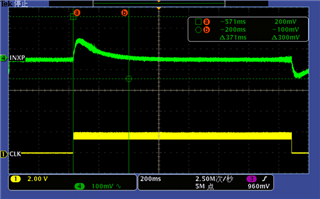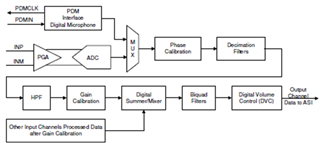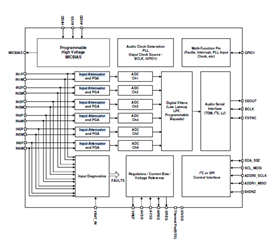Tool/software:
1.
When the PCM6240 is not communicating with our system-on-a-chip (SOC) via TDM, the DC bias voltage at IN1P is 0.1V. When the PCM6240 communicates with our SOC via TDM (using TDM CLK), the DC bias voltage at IN1P rises to 0.7V and lasts for approximately 300ms. Is this phenomenon normal? Is a 0.7V bias voltage recommended for the design?


2.
Does the PCM6240 have an internal fixed input attenuator with a known attenuation gain? The data sheet does not provide detailed descriptions of this. Does such a fixed attenuator exist? I cannot determine this from the diagrams either.



